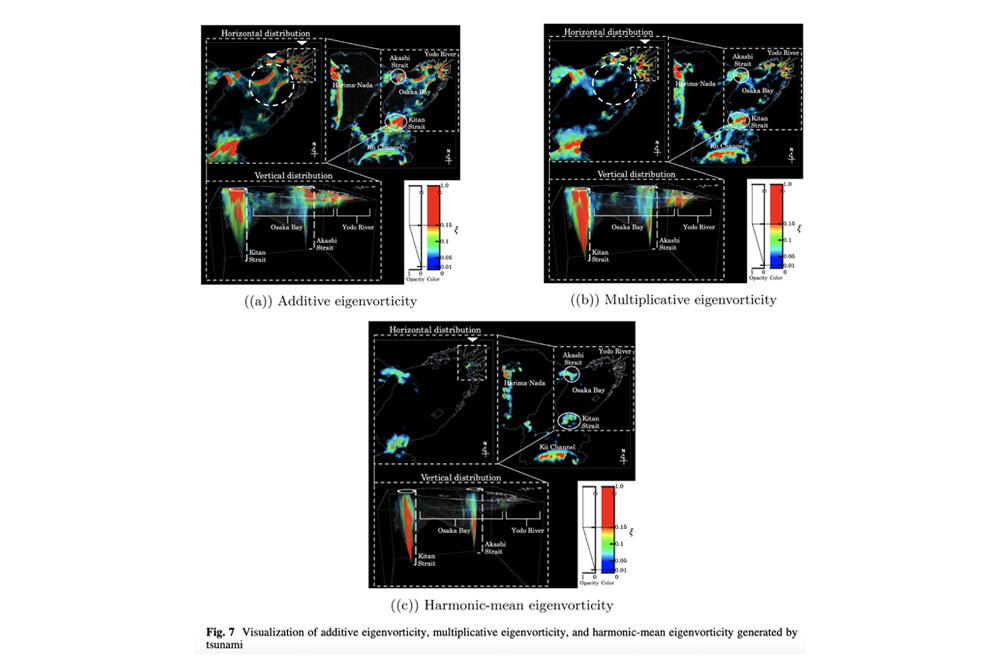RARA Fellow
Ultra-high-definition visualization of 3D scanned Big Data and the application of VR: integrated visualization of multilayered Big Data



Ultra-high-definition visualization of 3D scanned Big Data and the application of VR: integrated visualization of multilayered Big Data
SCROLL
FELLOW PROFILE
Graduated from the School of Science and Engineering at Waseda University in 1982 and completed a program at the Graduate School of Science and Engineering, Waseda University, in 1987 earning a Doctor of Science degree (Ph.D.).
After working at the University of Fukui, became a Professor at Ritsumeikan University in the College of Science and Engineering (reorganized into the College of Information Science and Engineering in 2004) in 2002, currently serving in this position. Previously served as President of the Japan Society for Simulation Technology and Vice President of the Visualization Society of Japan.
Currently serving as a Board Member of the Japan Society for Simulation Technology, a Fellow of the Japan Federation of Engineering Societies, an Associate Member of the Science Council of Japan, and a Member of the Association for Computing Machinery (ACM).
SEE ALSO
Visualizing a multilayered/multiplex world of Big Data
I have established two research topics for my RARA activities. The first involves measuring UNESCO World Cultural Heritage Sites in Japan and other countries, as well as national treasures, and constructing a digital archive of these tangible cultural assets. I will utilize this archived data to replicate the actual cultural assets in detail and create visualizations and VR experiences to support immersive analyses. However, simply visualizing individual Big Data sets as a symptomatic treatment limits the insights that can be gained. Therefore, the second topic focuses on visualizing multilayered, multiplex Big Data sets from various fields in an integrated manner to construct a new technical paradigm for acquiring comprehensive knowledge.
In graduate school, I majored in theoretical physics, with a particular focus on quantum mechanics. This field taught me that our world is composed of many tiny particles, whose behavior can be described using the mathematics of probability theory. At the same time, to understand the Big Data employed in computer science, visualizations based on particles and probability—similar to concepts in quantum mechanics—can be quite useful. The large-scale point cloud data obtained from 3D scanning is a good example of this. I vividly remember the excitement I felt when I made this connection, which ultimately inspired my current research.
A diverse range of information about our world is being accumulated daily as Big Data, which can be processed by computers. This phenomenon is relevant across all fields of inquiry, including the natural sciences, social sciences, and humanities. While the use of Big Data is still in its infancy, processing it presents significant challenges. However, if we can harness the vast amounts of information contained in Big Data, we can enable a major technological revolution. This research aims to drive such a revolution, with visualization as its core technology.
In the first half of my research activities in RARA, I will create an ultra-detailed visualization of 3D scanned Big Data using VR technology. This work will focus on cultural assets of great historical and artistic value, including the Borobudur temple in Indonesia (a UNESCO World Cultural Heritage Site), Taima-dera in Nara (e.g., the West Tower, which is a national treasure), and the Hachisuka clan’s armor in the Tokushima City Museum, all of which are currently in progress. In the second half, I will apply the technology developed in the first half to Big Data from various fields, aiming to enhance visualization technology for multilayered Big Data.
Visualization enhances people’s capacity for thought. With the rapid development of Big Data visualization, deep learning, and other technologies, there are growing predictions that visualization will soon become a fundamental tool for everyday thinking. This research aims to establish Big Data visualization as an essential support for thinking, decision-making, and action, much like traditional tools such as paper and pen or more recent innovations like web searches.
Partnerships:
This project aims to conduct interdisciplinary research that bridges the humanities and the sciences. I welcome collaboration with researchers from any field who are interested in the visualization of large-scale data. Big Data analysis is becoming essential across disciplines, as digital data increasingly replaces traditional analog data in many areas of research. I believe that data visualization serves as a common language for facilitating discussions among researchers from diverse fields.
Research collaborations:
Different countries and research institutes have their own cultures, methods, and areas of focus. Moreover, there is a significant distinction between the sciences and the humanities: scientific fields prioritize discovering new things, while humanities fields focus more on reconstructing knowledge. This is where the challenge of interdisciplinary research, particularly in combining the sciences and humanities, arises. However, by learning from each other and integrating our differences, we can foster new creations.



Latest Research Activity Report
-

Research Activity Report / Yuji Wada / Satoshi Konishi / Takanobu Nishiura / Kentaro Kaneko / Masayo Takahashi / Kota Suechika / Tomoko Hasegawa / Meng Lin / Haruo Noma / Ryo Akama / Satoshi Tanaka / Kazuto Saiki
RARA Fellows and RARA Associate Fellows exhibited at the Ritsumeikan TanQ Park
2025 / 11 / 05
VIEW DETAIL
-

Research Activity Report / Satoshi Tanaka
A paper by Prof. Satoshi Tanaka and his collaborators published in Journal of Visualization
2025 / 09 / 25
VIEW DETAIL
-

Research Activity Report / Satoshi Tanaka
Professor Satoshi Tanaka delivers a keynote lecture at the Australasian Simulation Congress (ASC 2025)
2025 / 09 / 11
VIEW DETAIL

